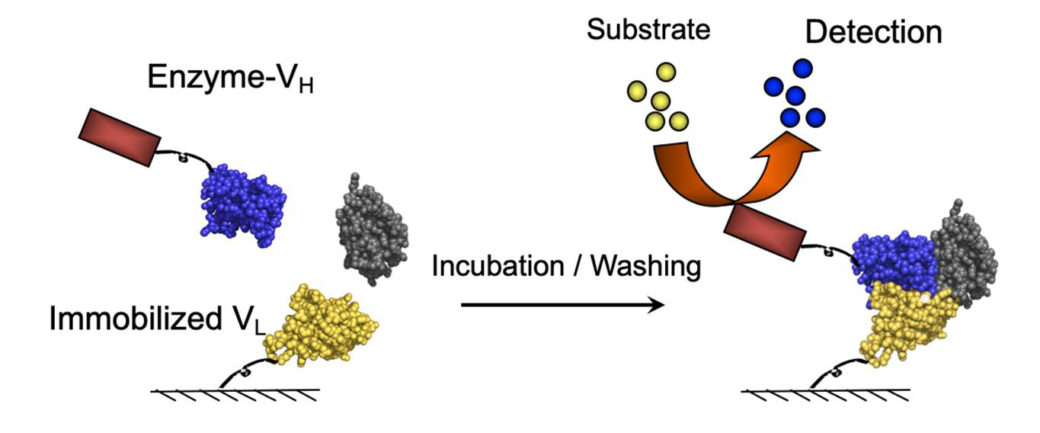Cell Bioligy
International Collaborative Research Project on Next Generation Immunosensor
Research Summary
Antibodies are unique proteins that are capable of recognizing diverse molecules, including proteins and small molecules, with high specificity and affinity. Antibodies are commonly employed in immunoassay techniques, which is useful not only for the diagnosis of diseases, but also for the detection of environmental pollutants in foods and the environment. In this project, we aim to develop novel antibodies against biomarker proteins, low molecular weight hormones and environmental pollutants using a range of techniques, such as phage display technology. Using the antibodies identified, we will also develop new immunosensors that are simple, fast and highly sensitive. We anticipate that this research will lead to practical applications, including clinical diagnosis and environmental pollutant detection systems.
- Development of useful antibodies by phage display method
The phage display method is a molecular evolution technology, an innovation for which the Nobel Prize in Chemistry was awarded in 2018. By fusing a gene encoding a protein with a phage gene, a protein expressed on the surface of a phage can be selected by its ability to bind an antigen. By constructing libraries of synthetic antibodies, it is possible identify novel antibodies without relying on laborious and time-consuming development by the immune system of a living animal. In this project, we are cloning many antibody genes, using these to optimize the characteristics such as affinity and specificity of antibodies. - Application of the open sandwich immunoassay to high performance immunosensors
Nowadays, the most widely used immunoassay is sandwich ELISA. This technique requires the use of two types of antibodies and extensive washing steps, which means that it is both time-consuming and expensive. A further limitation of this approach is that only a single antibody is able to bind a small molecule antigen at once, which precludes analysis of small molecules by this method. We have developed the open sandwich immunoassay (OS-IA), which uses the antigen-dependent association of antibody variable heavy chain and light chain variable region fragments (VH/VL) to detect low molecular weight antigens with high sensitivity. In this research project we are developing potentially rapid and highly sensitive immunosensors based on the OS-IA principle. - Quenchbody fluorescent probe
The Quenchbody (Q-body), which we discovered during previous work on the OS-IA, is an antibody fragment obtained by site-specific labeling of fluorescent dye(s) near the antigen-binding site. By optimizing the labeling method, the hydrophobic dye reaches a quenched state, which is ultimately reverted by the binding of an antigen. Antigen binding can therefore be detected as an increase in fluorescence intensity, offering a quick and convenient antigen detection system that does not require any washing steps. A further advantage of the Q-body method is its greater ability to detect macromolecular proteins in addition to small antigens. We are currently developing a method to select antibodies that are suitable for the Q-body method, which we anticipate will lead to the rapid development of low cost and practical measurement systems.




